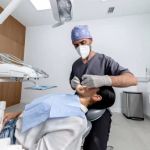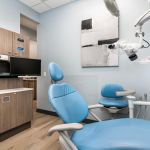- 1-Importance-of-Oral-Hygiene-for-Adults-with-Braces
- 2-Daily-Brushing-Techniques-for-Braces
- 3-Flossing-and-Interdental-Cleaning-Methods
- 4-Diet-and-Habit-Considerations-for-Braces-Wearers
- 5-Professional-Care-and-Recommended-Products
1. Importance of Oral Hygiene for Adults with Braces
For adults wearing braces, maintaining an effective dental care routine is not just about aesthetics; it’s crucial for oral health. Braces create numerous tiny spaces where food particles and plaque can easily accumulate, increasing the risk of cavities, gum inflammation, and staining. Unlike younger patients, adults often face additional challenges such as slower healing and pre-existing dental conditions, making diligent care even more important.
Understanding the complexity of oral hygiene during orthodontic treatment can help adults adopt habits that prevent complications. For example, a patient named Sarah, in her early 30s, shared how her initial neglect led to gum soreness and plaque buildup. With the right dental care routine, she reversed these issues and now maintains a bright smile throughout her braces journey.
1.1 The Risks of Neglecting Oral Care with Braces
Poor cleaning can lead to enamel decalcification — white spots that are permanent scars on teeth. Moreover, untreated plaque can cause gingivitis, which, if left unchecked, may progress to periodontal disease. Adults need to recognize these risks early and follow a structured oral hygiene routine tailored to their needs.
1.2 Psychological and Social Impact
Many adults feel self-conscious wearing braces. Maintaining fresh breath and clean teeth boosts confidence and social interactions, especially important for professional and personal life. The right dental care routine can therefore contribute to emotional well-being alongside physical health.
2. Daily Brushing Techniques for Braces
Effective brushing is the cornerstone of any dental care routine for adults with braces. Unlike traditional brushing methods, adults must adapt techniques to clean around brackets and wires thoroughly.
2.1 Choosing the Right Toothbrush
Soft-bristled toothbrushes or electric toothbrushes with orthodontic heads can improve plaque removal. Manual brushing is effective if done carefully, focusing on the areas around the braces.
2.2 Step-by-Step Brushing Method
Adults should brush at least twice a day for two minutes each time. First, angle the brush at 45 degrees toward the gumline to remove plaque around brackets. Then, brush the chewing surfaces and the inner parts of the teeth. Taking extra time ensures no food debris is left behind.
2.3 Case Study: How Routine Brushing Improved Results
John, a 28-year-old accountant, experienced frequent plaque buildup initially. After learning these brushing methods and using an electric toothbrush, his dental visits showed remarkable improvement in gum health and reduced plaque, proving that proper brushing transforms oral health during braces treatment.
3. Flossing and Interdental Cleaning Methods
Brushing alone cannot remove plaque from between teeth and under wires, making flossing and interdental cleaning essential.
3.1 Tools for Effective Flossing
Special orthodontic floss threaders or water flossers make it easier to reach tight spaces. These tools can navigate beneath the archwires, clearing debris that conventional floss cannot.
3.2 Techniques to Make Flossing Manageable
Adults new to braces may find flossing cumbersome. A practical approach is to dedicate a few minutes daily using floss threaders, starting with the easiest spots and gradually covering all teeth. Water flossers can be particularly helpful for those with limited dexterity.
3.3 Real-Life Experience
Emily, a 35-year-old teacher, struggled with flossing at first but found a water flosser game-changing. Her gums stopped bleeding after weeks of consistent use, illustrating the benefits of proper interdental cleaning in an adult’s dental care routine.
4. Diet and Habit Considerations for Braces Wearers
Oral hygiene is influenced heavily by diet and habits. Adults with braces must be mindful of what they eat and how they care for their teeth.
4.1 Foods to Avoid and Why
Sticky candies, hard nuts, and crunchy snacks can damage braces and trap food particles, complicating cleaning. Acidic drinks may erode enamel and worsen staining, especially around brackets.
4.2 Positive Dietary Habits
Incorporating crunchy vegetables and drinking plenty of water helps naturally clean teeth and maintain saliva flow, which protects against decay. Planning meals with braces in mind improves both comfort and hygiene.
4.3 Breaking Bad Habits
Adults often have habits like nail-biting or chewing pens, which can damage braces. Awareness and conscious effort to stop these habits support the effectiveness of the dental care routine.
5. Professional Care and Recommended Products
While daily care is essential, regular professional check-ups and cleanings are irreplaceable components of a successful dental care routine for adults with braces.
5.1 Importance of Professional Monitoring
Orthodontists can identify early signs of problems such as cavities or gum disease and adjust treatment plans accordingly. Professional cleanings remove hardened plaque that at-home care can’t address.
5.2 Recommended Dental Products
Using fluoride toothpaste, antibacterial mouthwash, and orthodontic wax enhances comfort and protection. For tailored advice and to find the best dental care products designed for braces, adults can explore options at Dentistry Toothtruth, a trusted resource for braces-friendly oral care solutions.
5.3 Final Thoughts from Experts
Many dental professionals emphasize consistency and patience. Developing a thorough, yet manageable dental care routine leads to not only healthier teeth but a more pleasant braces experience overall.







 Summit Dental Care4.0 (124 review)
Summit Dental Care4.0 (124 review) Fair Oaks Orthodontics5.0 (29 review)
Fair Oaks Orthodontics5.0 (29 review) Dental Care of North Fort Myers4.0 (708 review)
Dental Care of North Fort Myers4.0 (708 review) Sarkissian Dentistry: Robert Sarkissian, DDS, MAGD5.0 (84 review)
Sarkissian Dentistry: Robert Sarkissian, DDS, MAGD5.0 (84 review) Root 66 Endodontics4.0 (16 review)
Root 66 Endodontics4.0 (16 review) Scott Soderquist, DDS, MS0.0 (0 review)
Scott Soderquist, DDS, MS0.0 (0 review) The Importance of Oral Health Education During Pregnancy for a Healthy Pregnancy
The Importance of Oral Health Education During Pregnancy for a Healthy Pregnancy Best Tips for Brushing Your Teeth Properly for Healthy Gums: Essential Techniques for Oral Health
Best Tips for Brushing Your Teeth Properly for Healthy Gums: Essential Techniques for Oral Health Why Skipping Dental Checkups Can Lead to Bigger Oral Health Problems
Why Skipping Dental Checkups Can Lead to Bigger Oral Health Problems Advantages of Porcelain Dental Restorations
Advantages of Porcelain Dental Restorations How Can Diabetes Cause Tooth and Gum Problems? Preventing and Managing Oral Health Issues
How Can Diabetes Cause Tooth and Gum Problems? Preventing and Managing Oral Health Issues Healthy Habits for Promoting Good Oral Health and Hygiene: Tips for a Healthy Smile
Healthy Habits for Promoting Good Oral Health and Hygiene: Tips for a Healthy Smile